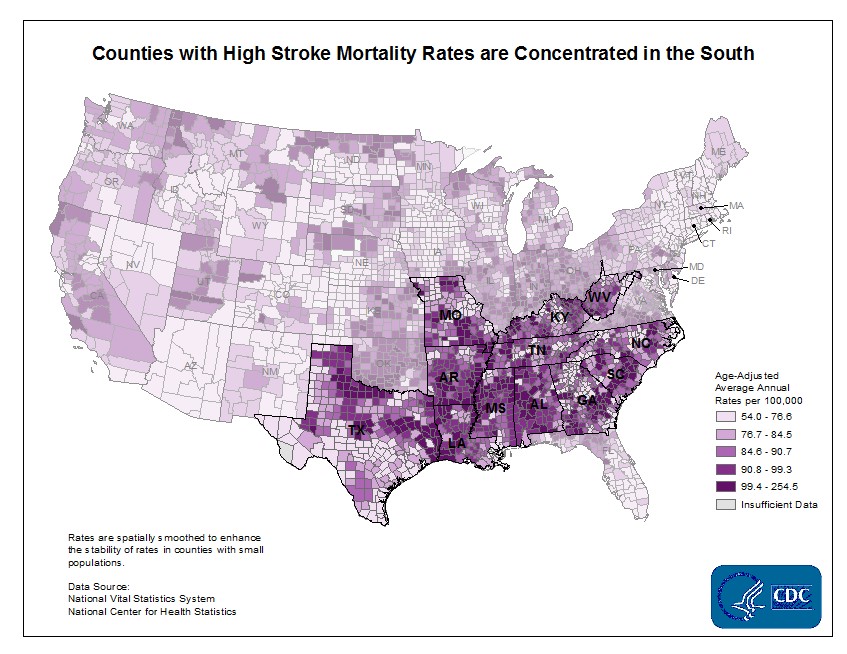UAB Researchers to Study Silent Strokes
A stroke is typically caused by a clot that cuts off blood supply to the brain, and when it happens, there are usually signs, such as facial drooping and slurred speech. But silent strokes, caused by smaller clots, are unrecognizable, according to UAB neuropsychologist Ronald Lazar.
“You have the same kind of signals, but they’re so small that, in and of themselves, each one does not cause symptoms that you’re going to recognize,” Lazar says, “But over many years, we think they do cause a problem.”
He says previous studies show that silent strokes increase the likelihood of having a larger stroke and of developing dementia. But in general, Lazar says there is a lack of research about the impact of these small neurological events and ways to prevent them. In a new study funded by the National Institutes of Health, he and fellow researchers at UAB and Stanford University hope to fill in some of the gaps.

Centers for Disease Control and Prevention
Alabama has one of the highest stroke mortality rates in the country.
The study, which is part of a larger national study called ARCADIA, will enroll 500 patients who have already had a stroke, and researchers will follow them for three years. During that time, participants will take a daily dose of an anticoagulant drug, either Aspirin or Apixaban. At the beginning and end of the study, investigators will use Magnetic Resonance Imaging to look for evidence of silent strokes. They will also conduct annual interviews to monitor for cognitive decline.
Lazar says they hope to improve understanding of how silent strokes might affect cognitive function overtime and study the preventative impact of both anticoagulant drugs.
“The fundamental goal is trying to minimize the occurrence of stroke in patients who might ordinarily be at high risk,” Lazar says.
Memory loss: As AI gobbles up chips, prices for devices may rise
Demand for memory chips currently exceeds supply and there's very little chance of that changing any time soon. More chips for AI means less available for other products such as computers and phones and that could drive up those prices too.
Brigitte Bardot, sex goddess of cinema, has died
Legendary screen siren and animal rights activist Brigitte Bardot has died at age 91. The alluring former model starred in numerous movies, often playing the highly sexualized love interest.
For Ukrainians, a nuclear missile museum is a bitter reminder of what the country gave up
The Museum of Strategic Missile Forces tells the story of how Ukraine dismantled its nuclear weapons arsenal after independence in 1991. Today many Ukrainians believe that decision to give up nukes was a mistake.
Jeffrey R. Holland, next in line to lead Church of Jesus Christ of Latter-day Saints, dies at 85
Jeffrey R. Holland led the Quorum of the Twelve Apostles, a key governing body. He was next in line to become the church's president.
Winter storm brings heavy snow and ice to busy holiday travel weekend
A powerful winter storm is impacting parts of the U.S. with major snowfall, ice, and below zero wind chills. The conditions are disrupting holiday travel and could last through next week.
Disability rights advocate Bob Kafka dead at 79
Bob Kafka was an organizer with ADAPT (American Disabled for Attendant Programs Today), a group which advocates for policy change to support people with disabilities.








